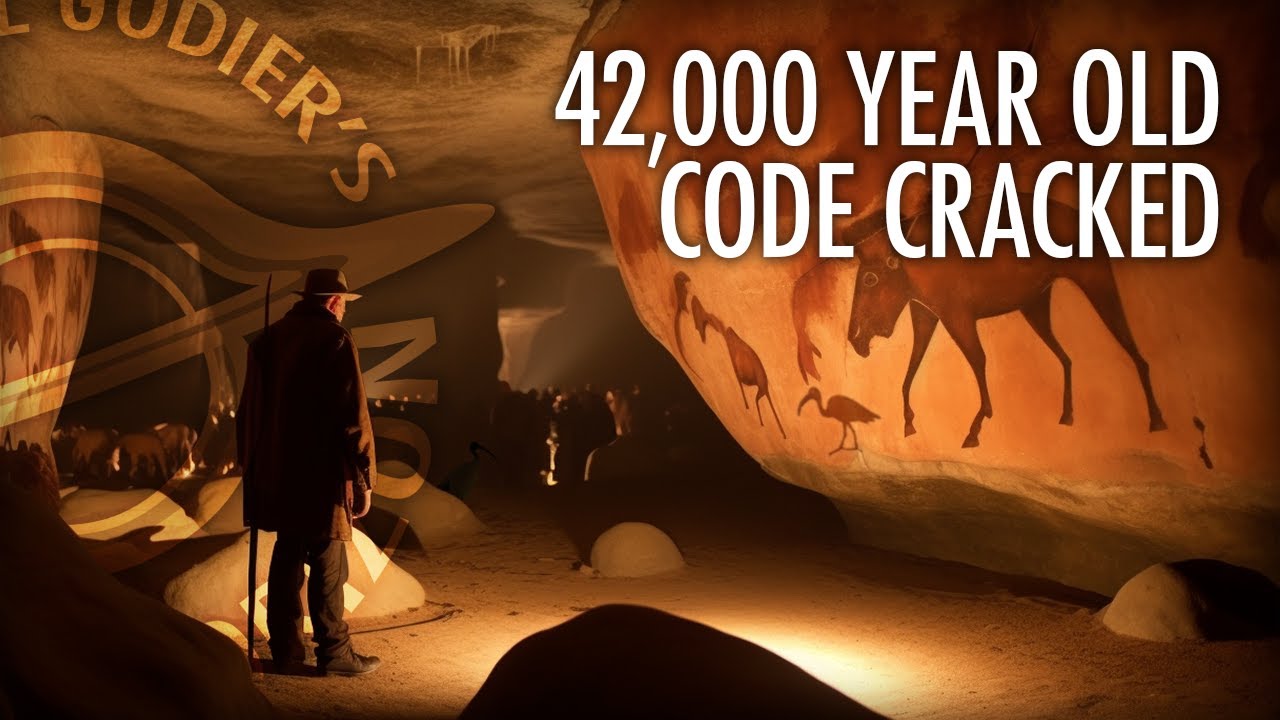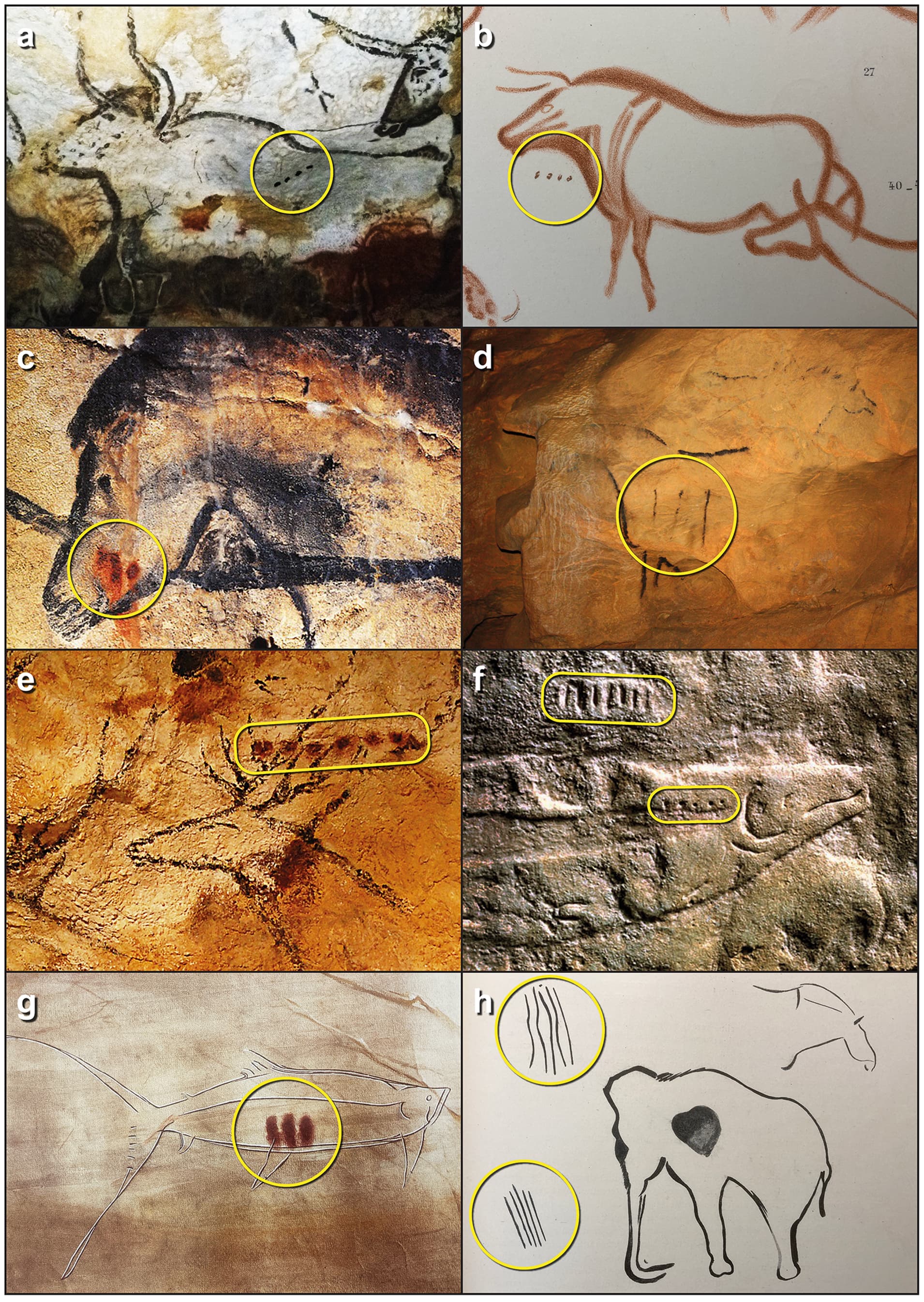Ever since their discovery around 150 years ago, the paintings in European caves dating from the Paleolithic era, with symbols dated as far back as at least 40,000 years before the present (B.P.) and complex images (most of animals) from 37,000 B.P., have stunned observers by their beauty and evidence that humans of the era were keen observers and talented in representing what they saw in art. Most investigation has concentrated on the animal figures, but the paintings are usually accompanied by symbols which are remarkably consistent among the more than 400 sites with these ancient paintings and the millennia over which they were made. What could they possibly mean?
In a paper published in January 2023 in the Cambridge Archaeological Journal, “An Upper Palaeolithic Proto-writing System and Phenological Calendar”, (full text at the link), the authors argue that these symbols were used, in conjunction with a lunar calendar (counting lunar months starting at some indication of the end of winter and resetting every winter), to mark the appearance of prey species in their territory and the time at which species reproduced. These marks were stable across large regions of settlement and over time, and may have constituted not only the first calendar, but the first human written language.
Here is the abstract.
In at least 400 European caves such as Lascaux, Chauvet and Altamira, Upper Palaeolithic Homo sapiens groups drew, painted and engraved non-figurative signs from at least ~42,000 B.P. and figurative images (notably animals) from at least 37,000 B.P. Since their discovery ~150 years ago, the purpose or meaning of European Upper Palaeolithic non-figurative signs has eluded researchers. Despite this, specialists assume that they were notational in some way. Using a database of images spanning the European Upper Palaeolithic, we suggest how three of the most frequently occurring signs—the line <|>, the dot <•>, and the —functioned as units of communication. We demonstrate that when found in close association with images of animals the line <|> and dot <•> constitute numbers denoting months, and form constituent parts of a local phenological/meteorological calendar beginning in spring and recording time from this point in lunar months. We also demonstrate that the sign, one of the most frequently occurring signs in Palaeolithic non-figurative art, has the meaning . The position of the within a sequence of marks denotes month of parturition, an ordinal representation of number in contrast to the cardinal representation used in tallies. Our data indicate that the purpose of this system of associating animals with calendar information was to record and convey seasonal behavioural information about specific prey taxa in the geographical regions of concern. We suggest a specific way in which the pairing of numbers with animal subjects constituted a complete unit of meaning—a notational system combined with its subject—that provides us with a specific insight into what one set of notational marks means. It gives us our first specific reading of European Upper Palaeolithic communication, the first known writing in the history of Homo sapiens.
Examples of animal depictions associated with sequences of dots/lines. (a) Aurochs: Lascaux, late period; (b) Aurochs: La Pasiega, late; (c) Horse: Chauvet, late (we differ in opinion with the Chauvet team, for whom it would be early); (d) Horse: Mayenne-Sciences, early; (e) Red Deer: Lascaux, late; (f) Salmon: Abri du Poisson, early; (g) Salmon (?): Pindal, late; (h) Mammoth: Pindal, early. (Sources: (a) File:Lascaux 004.jpg - Wikimedia Commons (b) Breuil et al. Reference Breuil, Obermaier and Alcalde del Rio1913, pl. XVIII; (c) free https://web.archive.org/web/20120222092520/http://www.istmira.com/foto-i-video-pervobytnoe-obschestvo/3924-iskusstvo-predystorii-pervobytnost-2.html (d) https://www.hominides.com/musees-et-sites/grotte-mayenne-sciences/ (e) Wellcome Collection. Attribution 4.0 International (CC BY 4.0); (f) © The Wendel Collection, Neanderthal Museum; (g) Berenguer Reference Berenguer1994, 92, fig. 63; (h) H. Breuil, in del Rio et al. Reference del Rio, Breuil and Sierra1911, 61, fig. 57.)

